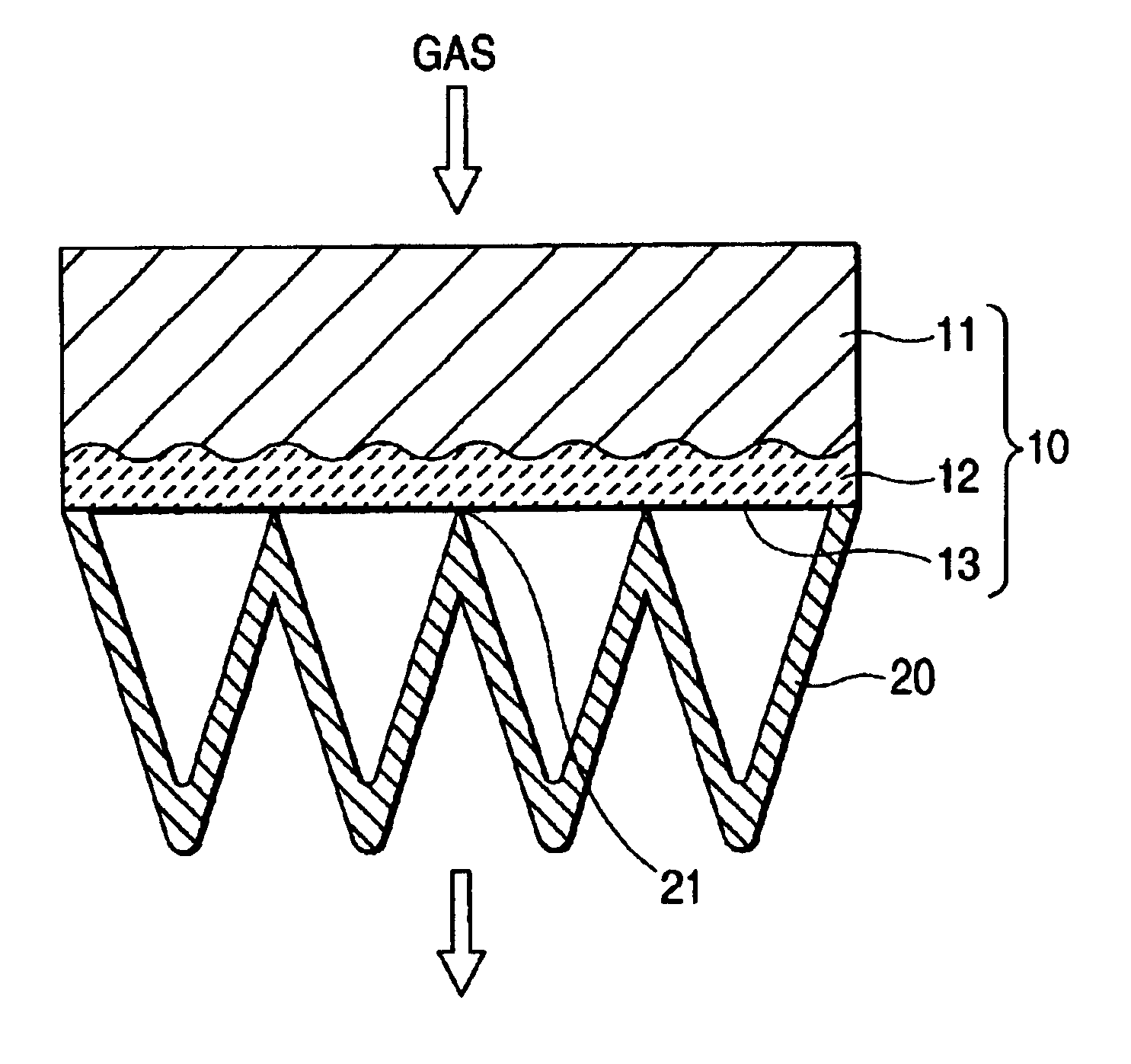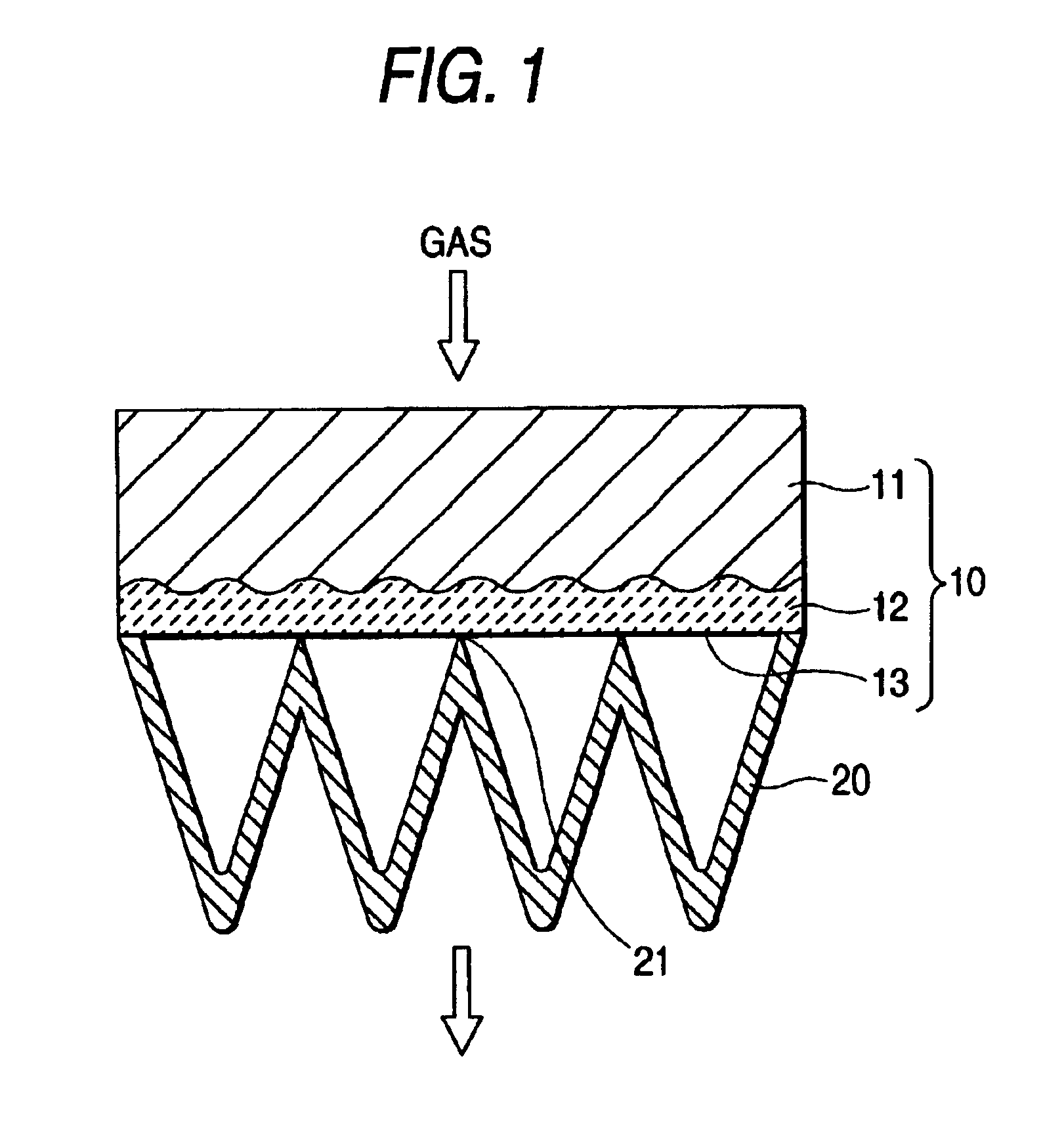Filter element
a filter element and filter element technology, applied in the field of filter elements, can solve the problems of increased filter element size, insufficient filter element dust holding capacity, and disadvantageous industrial use of filter elemen
- Summary
- Abstract
- Description
- Claims
- Application Information
AI Technical Summary
Benefits of technology
Problems solved by technology
Method used
Image
Examples
example
The filter element shown in FIG. 1 was obtained by arranging the second filtering member [viscous filter paper folded like the ridges (oil amount: 130 g / 54 g, kinematic viscosity of oil: 32.6 mm.sup.2 / s)] on the downstream side of the first filtering member [type (material) of nonwoven fabric: polyethylene terephthalate (PET), thickness: 18 mm, grammage: 365 g / m.sup.2 ]. This filter element was arranged so as to direct the first filtering member side toward the upstream side to accept the air-flow resistance test, the cleaning efficiency test, and the dust holding capacity test.
PUM
| Property | Measurement | Unit |
|---|---|---|
| thickness | aaaaa | aaaaa |
| thickness | aaaaa | aaaaa |
| density | aaaaa | aaaaa |
Abstract
Description
Claims
Application Information
 Login to View More
Login to View More - R&D
- Intellectual Property
- Life Sciences
- Materials
- Tech Scout
- Unparalleled Data Quality
- Higher Quality Content
- 60% Fewer Hallucinations
Browse by: Latest US Patents, China's latest patents, Technical Efficacy Thesaurus, Application Domain, Technology Topic, Popular Technical Reports.
© 2025 PatSnap. All rights reserved.Legal|Privacy policy|Modern Slavery Act Transparency Statement|Sitemap|About US| Contact US: help@patsnap.com


